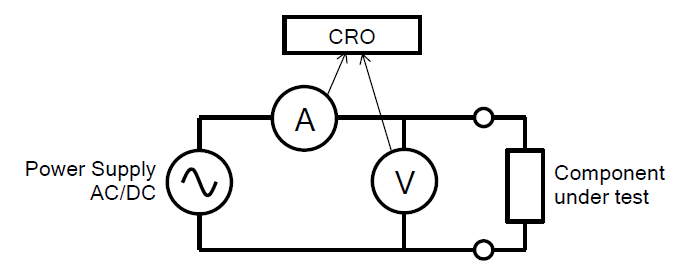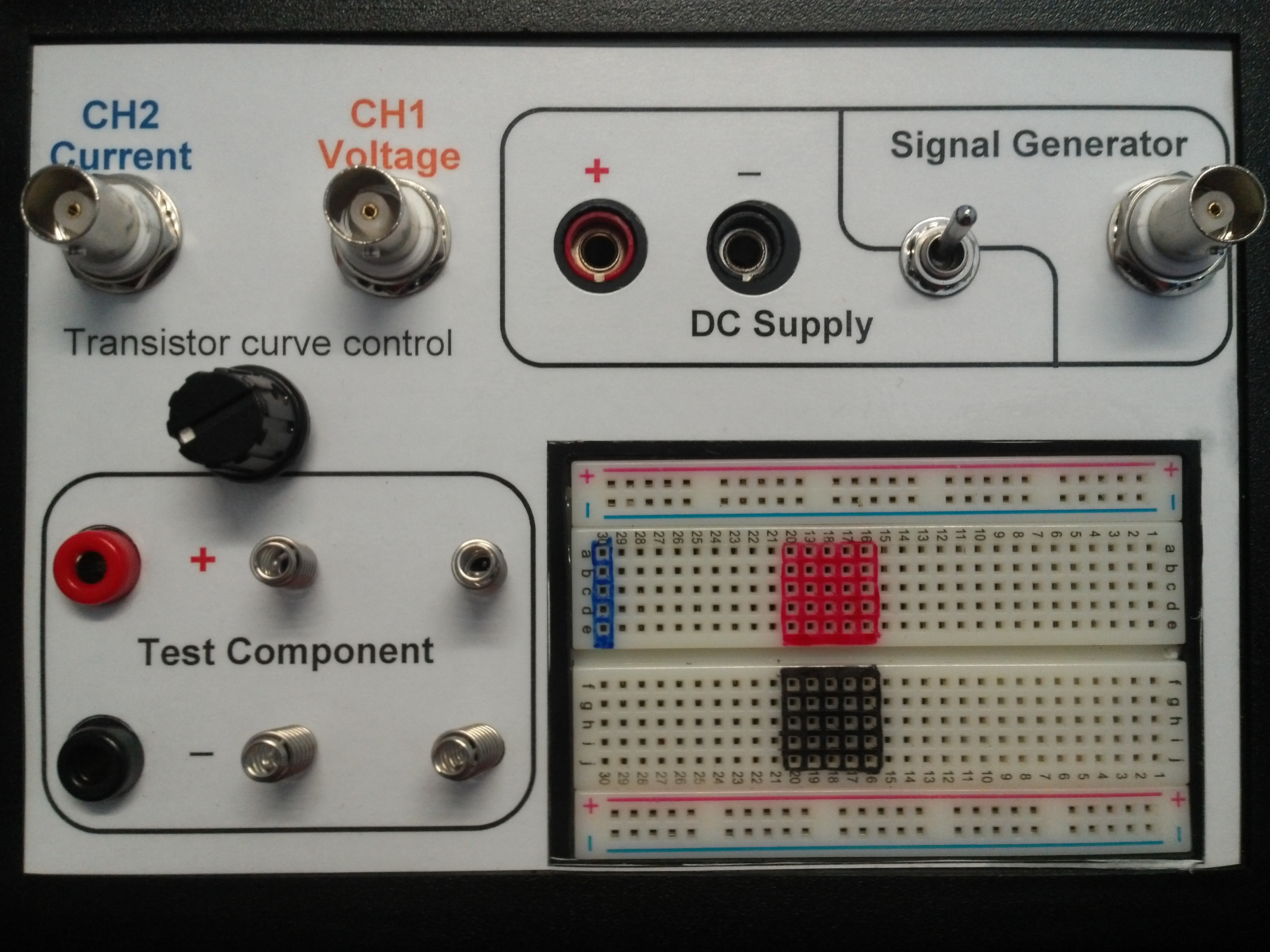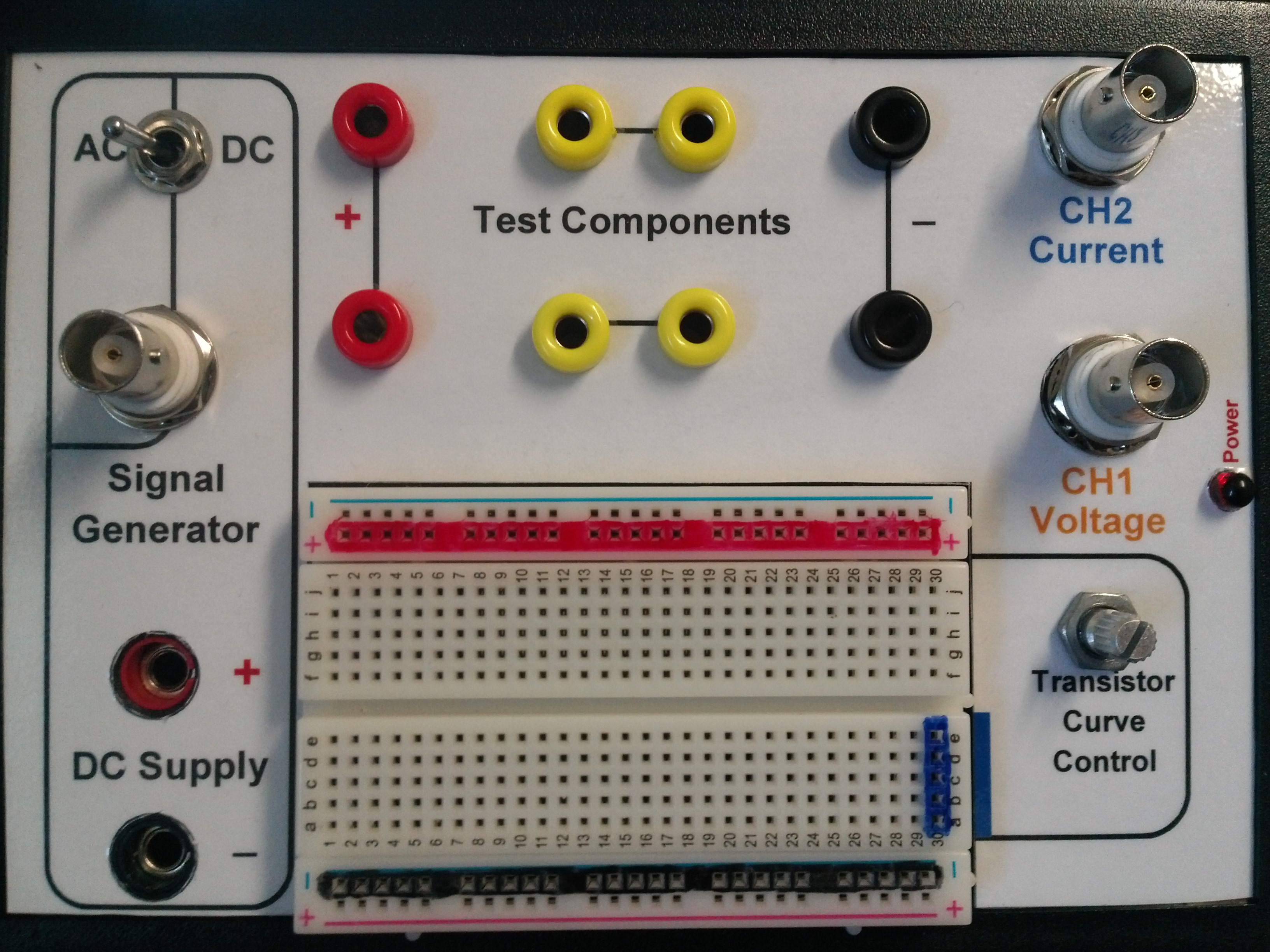Projects:2014S1-42 Current-Voltage Tracer Experiment
The aim of this project is to develop practical modules involving current-voltage characteristics for high school students and electrical engineering students in their first two years of study which illustrate basic electronics. Students will be initially introduced to simple circuit components including open circuits, short circuits, resistors and diodes then shown how different IV curves can be synthesised by series and parallel combinations of components. Further extension modules will include capacitors and inductors to demonstrate basic principles of filtering and resonance, transistors to demonstrate the importance of DC biasing and high power electronics to display current-voltage relationship of lightbulbs and DC motors.
This project will involve developing a number of prototype printed circuit boards with clear interfaces, instruction sets to suit different levels of audiences and report questions to reinforce the theory.
Contents
Team
Group members
- Kiyoon Kim
- Ben Agnew
- Luke Grinter
Supervisors
- Dr Wen Soong
- Dr Andrew Allison
Background
Current-voltage characteristics, or simply IV curves, describe the relationship between current and the voltage across an electronic component. It is a fundamental part of electronic circuit design as it allows us to model electronic components to achieve desired operation in various circuits. Some examples of such design include getting solar panels to operate at its maximum power point and getting transistors to operate in desired region of operations to achieve linear signal amplification in amplifier circuits.
Block diagram
The following block diagram shows the basic set-up required to trace current-voltage characteristics on a Cathode Ray Oscilloscope.
The power source drives a voltage across the component under test to capture the current-voltage characteristics over a certain voltage range. The current measurement and voltage measurement blocks feed measured current and voltage data into the Cathode Ray Oscilloscope to display IV characteristics in real time.
Power Source
The power supplies available are:
- Signal generator - Variable frequency, 50ohm output impedance, max 10Vpk
- AC plug pack - fixed at 50Hz, fixed voltage, current up to about 1 to 2A
- DC power supply - DC only (requires memory in CRO), output adjustable up to 30V and 3A
The power required depends largely on what components we want to be able to test. We developed a list of components and then split them into two groups.
Low power components
These components typically draw less than 100mA and as such the signal generator is a suitable power supply.
- Resistors
- Capacitors
- Inductors
- Diodes (includes power, light emitting and zener diodes)
- Transistors (both BJT and FET)
High power components
These components draw a current in the range 0.5A to 3A and the lab DC power supplies were used.
- Light bulbs
- DC motors
- Fuses and Circuit breakers
Current Measurement
Resistor method
This works by passing the current through a resistor (of known value) and measuring the voltage drop across it. Since we can't directly measure the voltage (due the CRO probes been grounded) we designed a circuit that uses an op-amp to calculate the difference between the voltages on either side of the resistor (with respect to ground).
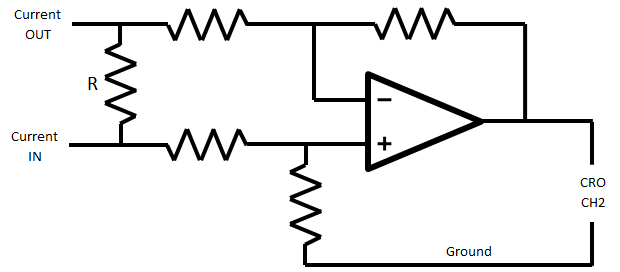
The resistor marked R is the current sense resistor and needs to have a value that is suitable for the amount of current that is to be measured. The other resistors set the gain of the op-amp. The value of R and the op-amp gain determine the volts per amp that the CRO sees.
Pros
- Simple and easy to understand and build
- Can be built to suit a large range of currents (by adjusting the value of R)
Cons
- Introduces a significant voltage drop (ie. the test components don't see the full supply voltage)
Hall Effect Sensor
The current can be measured by using a hall effect sensor to measure the magnetic field around the wire due to the current flowing in the wire. Due to the magnetic field been very week for small currents the current carrying wire is looped many times around a magnetic core to concentrate the field though the sensor in the gap. This setup can been seen in the following photo.
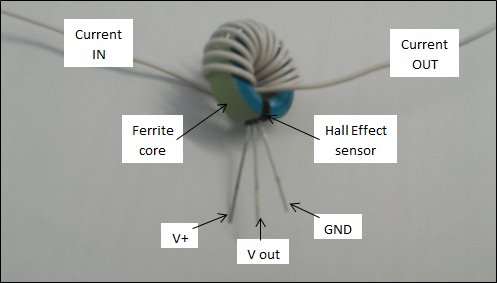
The sensor used was a UGN3503UA Hall Effect Sensor which requires a supply of +5V and has a quiescent output voltage of 2.5V which needs to be compensated for. With 15 turns of wire on the coil we found that it gave a volts per amp ratio of about 72mV/A
Pros
- Very robust - can't be damaged by applying to much current
- Small voltage drop across the current path - small impact on rest of circuit
Cons
- 2.5V offset needs to be accounted for
- More complex to build
- Only works for currents larger than about 0.5A
Interface Design
1st Prototype box
2nd Prototype box
Instructions and Exercises
- High School Module
The targeted audience for this module is high school visitors for the School of Electrical and Electronic Engineering. This module is to be accompanied by a short presentation by the lab demonstrator as South Australian students lack electronics background due to the nature of the SACE curriculum. The target focus is to introduce high school students to basic building blocks in electronics - short-circuit, open-circuit, resistors and different types of diodes.
- Resistors and Diodes
The targeted audience for this module is first year EEE students. The key learning objectives are introducing students to non-ideal nature of electronic components, understanding the behaviour different types of diodes and their applications.
- Capacitors, Inductors, Filters and Resonances
The targeted audience for this module is first year EEE students. The key learning objective is to introduce students to current-voltage characteristics of capacitors and inductors to demonstrate basic filtering principles and the behaviour of simple resonant circuits.
- BJTs and FETs
The targeted audience for this module is second year EEE students to serve as an introductory module to existing Level 2 Electronics Pre-Amplifier practical. The key learning objective is to support the theory covered in lectures to enhance student understanding of transistors and their behaviours in different region of operations. Students will be expected to carry out load line analysis and select appropriate DC bias points for a basic amplifier design.
- Lightbulbs and DC Motors
The targeted audience for this module is first year EEE students. The key learning objective is to introduce students to current-voltage characteristics of Lightbulbs and DC motors. Students will initially experiment with the lightbulb to observe temperature dependent characteristics of high power electronic components and then use a Hand-Crank DC Motor to identify critical operating regions (No-load, stall and generation) of a DC motor.
